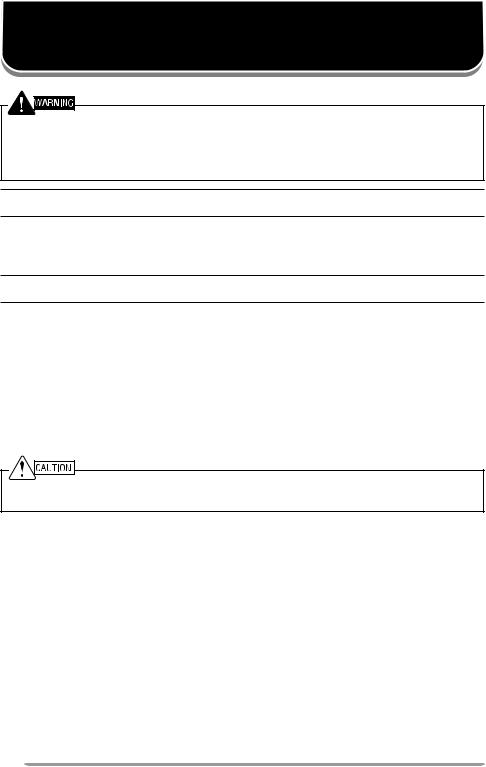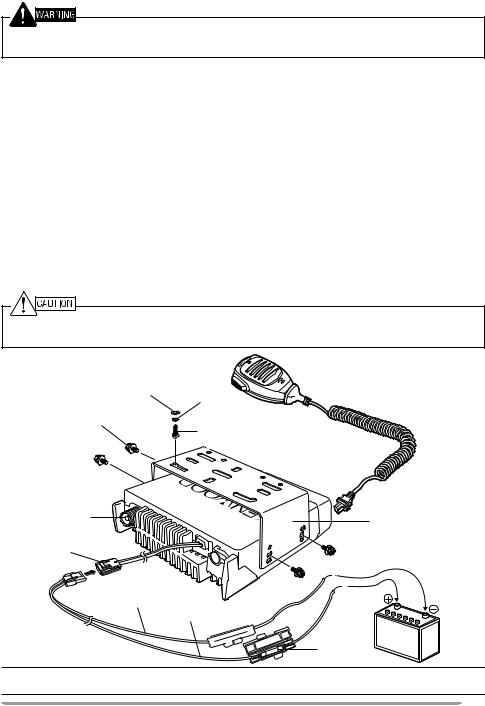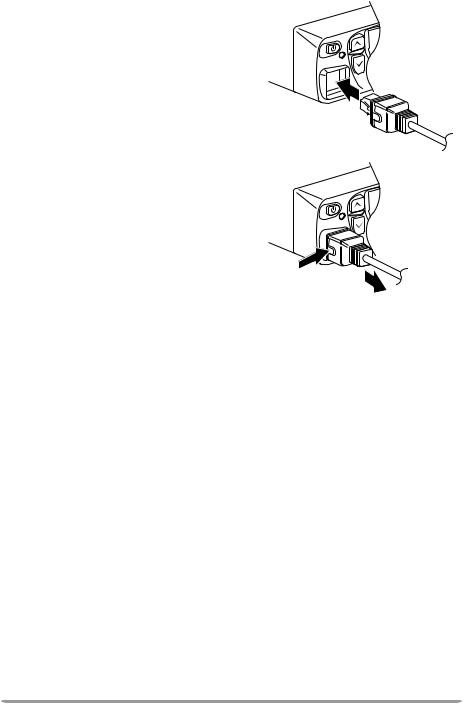Kenwood TK-8160H, TK-7160H, TK-7160, TK-8160 User Manual

TK-7160/ TK-8160 TK-7160H/ TK-8160H
VHF FM TRANSCEIVER/ UHF FM TRANSCEIVER
INSTRUCTION MANUAL
…METTEUR-R…CEPTEUR FM VHF/ …METTEUR-R…CEPTEUR FM UHF
MODE DíEMPLOI
TRANSCEPTOR FM VHF/ TRANSCEPTOR FM UHF
MANUAL DE INSTRUCCIONES
© B62-1829-00 (K, M)
09 08 07 06 05 04 03 02 01 00

VHF FM TRANSCEIVER/
UHF FM TRANSCEIVER
TK-7160/ TK-8160
TK-7160H/ TK-8160H
INSTRUCTION MANUAL
ENGLISH

THANK YOU
We are grateful you chose KENWOOD for your personal mobile applications. We believe this easy-to-use transceiver will provide dependable communications to keep personnel operating at peak efficiency.
KENWOOD transceivers incorporate the latest in advanced technology. As a result, we feel strongly that you will be pleased with the quality and features of this product.
MODELS COVERED BY THIS MANUAL
The models listed below are covered by this manual:
ïTK-7160: VHF FM Transceiver
ïTK-7160H: VHF FM Transceiver
ïTK-8160: UHF FM Transceiver
ïTK-8160H: UHF FM Transceiver
NOTICES TO THE USER
Government law prohibits the operation of unlicensed transmitters within the territories under government control.
Illegal operation is punishable by fine and/or imprisonment.
Refer service to qualified technicians only.
SAFETY: It is important that the operator is aware of, and understands, hazards common to the operation of any transceiver.
EXPLOSIVE ATMOSPHERES (GASES, DUST, FUMES, etc.)
Turn OFF your transceiver while taking on fuel or while parked in gasoline service stations. Do not carry spare fuel containers in the trunk of your vehicle if your transceiver is mounted in the trunk area.
INJURY FROM RADIO FREQUENCY TRANSMISSIONS
Do not operate your transceiver when somebody is either touching the antenna or standing within
2 to 3 feet (60 to 90 cm) of it, to avoid the possibility of radio frequency burns or related physical injury.
DYNAMITE BLASTING CAPS
Operating the transceiver within 500 feet (150 m) of dynamite blasting caps may cause them to explode. Turn OFF your transceiver when in an area where blasting is in progress, or where
ìTURN OFF TWO-WAY RADIOî signs have been posted. If you are transporting blasting caps in your vehicle, make sure they are carried in a closed metal box with a padded interior. Do not transmit while the caps are being placed into or removed from the container.
i

PRECAUTIONS
Observe the following precautions to prevent fire, personal injury, and transceiver damage.
ïDo not attempt to configure the transceiver while driving; it is too dangerous.
ïDo not disassemble or modify the transceiver for any reason.
ïDo not expose the transceiver to long periods of direct sunlight, nor place it near heating appliances.
ïDo not place the transceiver in excessively dusty, humid, or wet areas, nor on unstable surfaces.
ïIf an abnormal odor or smoke is detected coming from the transceiver, switch the transceiver power off immediately, and contact your KENWOOD dealer.
ïUse of the transceiver while you are driving may be against traffic laws. Please check and observe the vehicle regulations in your area.
ïDo not use options not specified by KENWOOD.
One or more of the following statements may be applicable:
FCC WARNING
This equipment generates or uses radio frequency energy. Changes or modifications to this equipment may cause harmful interference unless the modifications are expressly approved in the instruction manual. The user could lose the authority to operate this equipment if an unauthorized change or modification is made.
INFORMATION TO THE DIGITAL DEVICE USER REQUIRED BY THE FCC
This equipment has been tested and found to comply with the limits for a Class B digital device, pursuant to Part 15 of the FCC Rules. These limits are designed to provide reasonable protection against harmful interference in a residential installation.
This equipment generates, uses and can generate radio frequency energy and, if not installed and used in accordance with the instructions, may cause harmful interference to radio communications. However, there is no guarantee that the interference will not occur in a particular installation. If this equipment does cause harmful interference to radio or television reception, which can be determined by turning the equipment off and on, the user is encouraged to try to correct the interference by one or more of the following measures:
•Reorient or relocate the receiving antenna.
•Increase the separation between the equipment and receiver.
•Connect the equipment to an outlet on a circuit different from that to which the receiver is connected.
•Consult the dealer for technical assistance.
ii

CONTENTS |
|
UNPACKING AND CHECKING EQUIPMENT ................................... |
1 |
SUPPLIED ACCESSORIES ..................................................................... |
1 |
PREPARATION .................................................................................. |
2 |
TOOLS REQUIRED .............................................................................. |
2 |
POWER CABLE CONNECTION ............................................................... |
2 |
INSTALLING THE TRANSCEIVER .............................................................. |
3 |
CONNECTING A MICROPHONE ............................................................... |
4 |
GETTING ACQUAINTED ................................................................... |
5 |
FRONT PANEL ................................................................................... |
5 |
DISPLAY ........................................................................................... |
7 |
REAR PANEL ..................................................................................... |
7 |
PROGRAMMABLE FUNCTIONS ...................................................... |
8 |
BASIC OPERATIONS ...................................................................... |
10 |
SWITCHING POWER ON/ OFF ........................................................... |
10 |
ADJUSTING THE VOLUME ................................................................... |
10 |
SELECTING A ZONE AND CHANNEL ...................................................... |
11 |
TRANSMITTING ................................................................................. |
11 |
RECEIVING ...................................................................................... |
11 |
SCAN ................................................................................................ |
12 |
PRIORITY SCAN ............................................................................... |
12 |
ADD TO SCAN/ DELETE FROM SCAN ................................................... |
13 |
REVERT CHANNEL ............................................................................ |
13 |
DTMF CALLS ................................................................................... |
14 |
STORE & SEND ............................................................................... |
14 |
MANUAL DIALING ............................................................................. |
14 |
STORING DTMF NUMBERS ............................................................... |
14 |
DIALING STORED DTMF NUMBERS .................................................... |
15 |
CLEARING STORED DTMF NUMBERS ................................................. |
15 |
REDIALING ...................................................................................... |
15 |
STUN ............................................................................................. |
15 |
QUIET TALK (QT)/ DIGITAL QUIET TALK (DQT) .......................... |
16 |
OPERATOR SELECTABLE TONE (OST) ................................................ |
16 |
iii

CODE SQUELCH (ID CODE) .......................................................... |
17 |
RECEIVING ...................................................................................... |
17 |
TRANSMITTING ................................................................................. |
17 |
SELECTIVE CALL ........................................................................... |
18 |
RECEIVING ...................................................................................... |
18 |
TRANSMITTING ................................................................................. |
18 |
2-TONE SIGNALING ........................................................................ |
19 |
RECEIVING ...................................................................................... |
19 |
TRANSMITTING ................................................................................. |
19 |
FleetSync: ALPHANUMERIC 2-WAY PAGING SYSTEM .............. |
20 |
GPS REPORT ................................................................................. |
20 |
SELCALL (SELECTIVE CALLING) ......................................................... |
20 |
STATUS MESSAGE ............................................................................ |
21 |
EMERGENCY OPERATION............................................................. |
22 |
ADVANCED OPERATIONS ............................................................. |
23 |
TALK-AROUND ................................................................................ |
23 |
DTMF NUMBER DISPLAY ................................................................. |
23 |
HORN ALERT ................................................................................... |
23 |
PUBLIC ADDRESS (PA) SYSTEM ........................................................ |
24 |
MONITOR ........................................................................................ |
24 |
SQUELCH LEVEL .............................................................................. |
24 |
VOICE SCRAMBLER .......................................................................... |
25 |
KEY LOCK ...................................................................................... |
25 |
BACKGROUND OPERATIONS ....................................................... |
26 |
TIME-OUT TIMER (TOT) ................................................................... |
26 |
BUSY CHANNEL LOCKOUT (BCL) ...................................................... |
26 |
BEGINNING/ END OF TRANSMIT SIGNAL ............................................... |
26 |
iv

UNPACKING AND CHECKING EQUIPMENT
Note: The following unpacking instructions are for use by your KENWOOD dealer, an authorized KENWOOD service facility, or the factory.
Carefully unpack the transceiver. We recommend that you identify the items listed in the following table before discarding the packing material. If any items are missing or have been damaged during shipment, file a claim with the carrier immediately.
SUPPLIED ACCESSORIES
Item |
Part Number |
Quantity |
|
Microphone (with cable) |
T91-0639-XX |
1 |
|
(K type only) |
|||
|
|
||
|
|
|
|
Microphone hanger (with 4 x 16 mm self-tapping |
J19-1584-XX |
1 |
|
screws) (K type only) |
|||
|
|
||
|
|
|
|
DC power cable (with fuses) |
E30-3339-XX |
1 |
|
|
|
|
|
ï 10 A fuse (TK-7160/ TK-8160 only) |
F51-0016-XX |
2 |
|
|
|
||
ï 15 A fuse (TK-7160H/ TK-8160H only) |
F51-0017-XX |
||
|
|||
|
|
|
|
Mounting bracket |
J29-0662-XX |
1 |
|
|
|
|
|
Screw set: |
|
|
|
ï 5 x 16 mm self-tapping screw (4 pieces) |
|
|
|
ï Hex-headed screw with washer (4 pieces) |
N99-0395-XX |
1 |
|
ï Spring washer (4 pieces) |
|
|
|
ï Flat washer (4 pieces) |
|
|
|
|
|
|
|
Instruction manual |
B62-1829-XX |
1 |
|
|
|
|
Microphone (with cable) |
Microphone hanger |
|
(with 4 x 16 mm self-tapping screws) |
DC power cable (with fuses) |
Mounting bracket |
Screw set |
1

PREPARATION
Various electronic equipment in your vehicle may malfunction if they are not properly protected from the radio frequency energy which is present while transmitting. Electronic fuel injection, anti-skid braking, and cruise control systems are typical examples of equipment that may malfunction. If your vehicle contains such equipment, consult the dealer for the make of vehicle and enlist his/her aid in determining if they will perform normally while transmitting.
Note: The following preparation instructions are for use by your KENWOOD dealer, an authorized KENWOOD service facility, or the factory.
TOOLS REQUIRED
Note: Before installing the transceiver, always check how far the mounting screws will extend below the mounting surface. When drilling mounting holes, be careful not to damage vehicle wiring or parts.
The following tools are required for installing the transceiver:
ï6 mm (1/4 inch) or larger electric drill
ï4.2 mm (5/32 inch) drill bit for the 5 x 16 mm self-tapping screws
ï3.2 mm (1/8 inch) drill bit for the 4 x 16 mm self-tapping screws
ïCircle cutters
POWER CABLE CONNECTION
The transceiver operates in 12 V negative ground systems only! Check the battery polarity and voltage of the vehicle before installing the transceiver.
1Check for an existing hole, conveniently located in the firewall, where the power cable can be passed through.
ïIf no hole exists, use a circle cutter to drill the firewall, then install a rubber grommet.
2Run the two power cable leads through the firewall and into the engine compartment, from the passenger compartment.
3Connect the red lead to the positive (+) battery terminal and the black lead to the negative (ñ) battery terminal.
ï Locate the fuse as close to the battery as possible.
4Coil the surplus cable and secure with a retaining band.
ïBe sure to leave enough slack in the cables so the transceiver can be removed for servicing while keeping the power applied.
2

INSTALLING THE TRANSCEIVER
For passenger safety, install the transceiver securely using the supplied mounting bracket, so the transceiver will not break loose in the event of a collision.
1Mark the position of the holes in the dash by using the mounting bracket as a template. Drill the holes, then attach the mounting bracket using the supplied 5 x 16 mm self-tapping screws.
ïBe sure to mount the transceiver in a location where the controls are within easy reach of the user and where there is sufficient space at the rear of the transceiver for cable connections.
2 Connect the antenna and the supplied power cable to the transceiver.
3Slide the transceiver into the mounting bracket and secure it using the supplied hex-headed screws.
4Mount the microphone hanger in a location where it will be within easy reach of the user.
ïThe microphone and microphone cable should be mounted in a place where they will not interfere with the safe operation of the vehicle.
When replacing the fuse in the DC power cable, be sure to replace it with a fuse of the same value.
Never replace a fuse with one that is rated with a higher value.
Flat washer |
Spring |
Microphone |
|
|
|
||
Hex-headed screw |
washer |
|
|
5 x 16 mm self-tapping screw |
|||
|
|||
Antenna |
Mounting bracket |
connector |
Power input connector
Black (ñ) cable |
|
|
|
|
Red (+) cable |
12 V |
|
|
|
||
DC power cable |
|
vehicle |
|
Fuse |
battery |
||
|
Note: The microphone is supplied only with K type models; it is not supplied with M type models. The model type is marked on the carton.
3

CONNECTING A MICROPHONE
1Insert the microphone plug into the jack on the front panel of the transceiver.
ïBe sure the tab on the microphone plug is facing the left hand side.
2Mount the microphone on the microphone hanger where it will be within easy reach of the user.
3To remove the microphone plug, press the tab on the connector while pulling the plug out of the transceiver jack.
4
